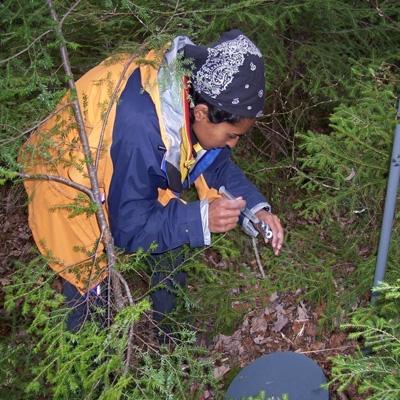Denitrification in the Northern Forest

Humans have doubled the annual global production of "reactive" nitrogen (N), causing degradation of air and water quality and coastal ecosystems. Development of management strategies and policies to address nitrogen pollution is hindered by uncertainties about fate and transport of different forms of nitrogen. Inputs of nitrogen in fertilizer, atmospheric deposition, and sewage are substantially higher than outputs of nitrogen in streamwater in many Northern Forest watersheds.
Uncertainty about "missing N" has led to increased interest in nitrogen gas production as an important fate of nitrogen. Natural denitrification by bacteria converts the nitrate form of nitrogen to unreactive dinitrogen (N2) gas or to more reactive gases, such as nitrous oxide (N2O), which contributes to the greenhouse effect and destruction of the ozone layer. NSRC researchers measured N2O and N2 at three sites across northeastern North America that differ in nitrogen richness, soil, and vegetation (Turkey Lakes in Ontario, Bear Brook in Maine, and Hubbard Brook in New Hampshire).
The good news is that denitrification returns a significant portion of reactive atmospheric nitrogen deposition back to the atmosphere as unreactive N2, which appears to be the dominant end-product of denitrification in the region. At Hubbard Brook and Bear Brook, denitrification may account for as much as 40% of deposition. These ecosystem-scale estimates are also relevant at the landscape scale as there was little variation among locations at these sites. None of the Turkey Lakes ecosystems appeared to be producing significant amounts of nitrogen gas and require further study of variations among wetland and upland locations to make evaluations at the landscape scale.
